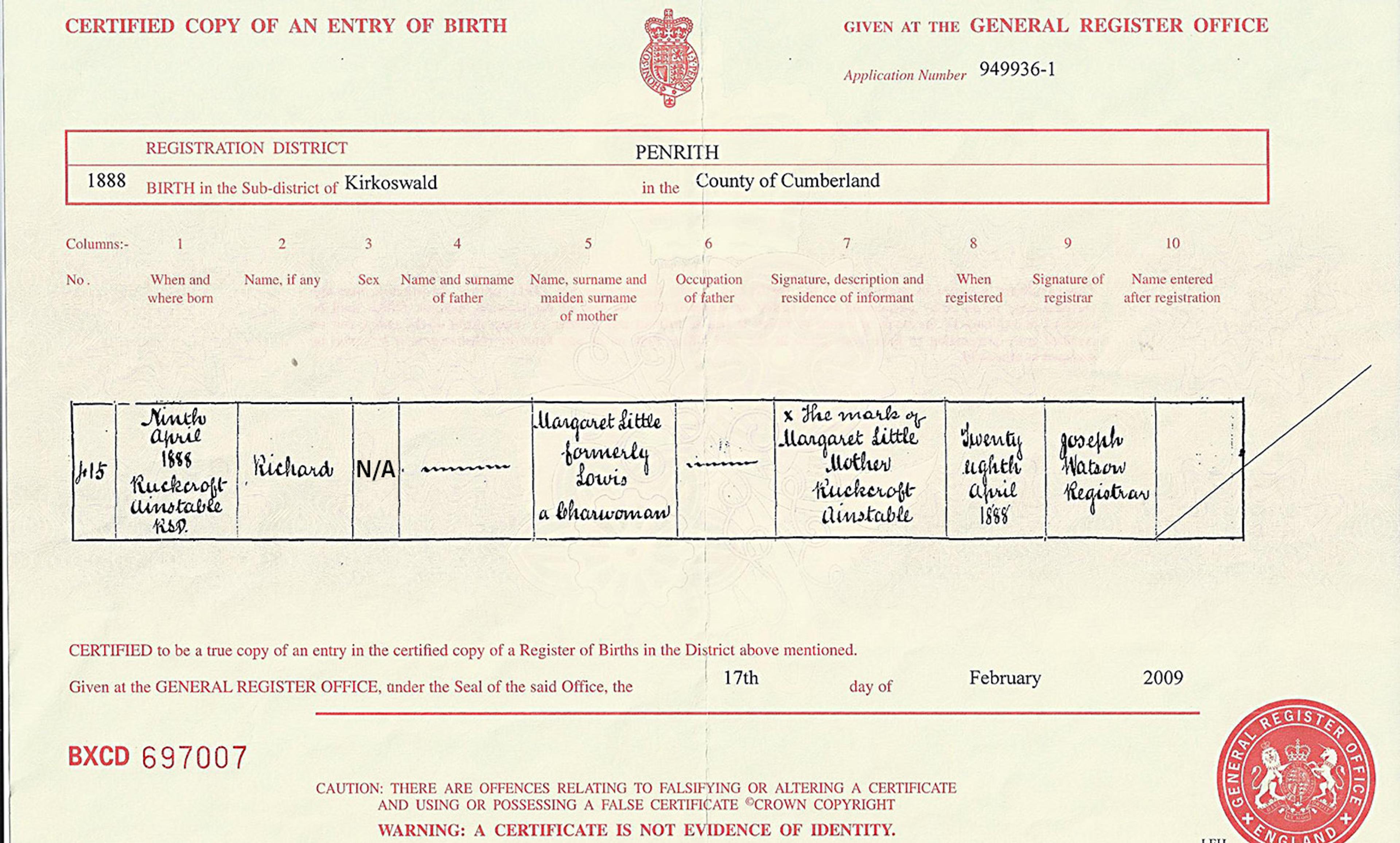Beth/Flickr
By the 20th week into a pregnancy, an ultrasound scan can be used to determine a baby’s sex and parents are given the option of learning this information, or waiting to hear ‘It’s a boy!’ or ‘It’s a girl!’ At birth, the delivering physician or midwife visually confirms and records the previewed sex identity on a birth certificate application form. Our governments have some good reasons for collecting and keeping sex identity information about us in the aggregate for the purposes of demographic studies, public health and affirmative-action measures. But the sex markers on state-issued birth certificates are not necessary for these goals. In fact, a government has no business collecting information about our personal sex identities at birth, or keeping track of the decisions we might make about our sex identities over the course of our lifetimes.
To protect the right of gender self-determination, we should remove sex markers from birth certificates before they become the basis for sex discrimination. Consider North Carolina’s 2016 ‘bathroom bill’, which required people to use the restroom that matched their ‘biological sex’ – the one noted on a birth certificate – in public schools and state agencies. Defenders of this and other ‘bathroom bills’ cite privacy and safety concerns that are tied to the false stereotype that transgender women are really heterosexual men who don dresses to enter female-designated public restrooms, and sexually assault girls and women. Critics of the law see it as state-sponsored gender identity discrimination.
Getting rid of sex markers on birth certificates is rooted in the liberal philosophical concept of self-determination and, in particular, the precept that the state should not restrict our free expression and speech.
We are partway there. The majority of US states permits transgender people to change the sex marker on their birth certificate. The transgender civil rights movement has long focused on assimilating and accommodating transgender people within the existing sex binary of male or female. These reforms help some transgender people, but not everyone can or wishes to be defined by these norms. Assimilation and accommodation leave intact the primary source of sex-identity discrimination: bureaucratic sex-classification itself.
The policy reform of allowing transgender people to ‘correct’ the sex markers on birth certificates also doesn’t guarantee its enforcement. Stephanie Mott’s story is a case in point. Mott, a transgender woman, is suing the state of Kansas for failing to enforce a law that explicitly allows transgender people to change the sex markers on their birth certificates. ‘I shouldn’t have to out myself as transgender every time I apply for a job or when I register to vote,’ Mott said.
The act of correction is also problematic because it implies some sort of mistake. In his beautiful memoir What Becomes You (2008), co-written with his mother Hilda Raz, Aaron Raz Link, a self-described white female-to-male transsexual, historian of science and professional clown, challenges the persistent stereotype that transgender people are ‘trapped in the wrong body’, and acquire a ‘new body’ via surgery and hormones. He begins the story of his transition with the inevitable mutability of all human bodies over time:
Like everyone else, I have had the same body since the day I was born. Approximately every seven years, most of my cells, like yours, have been replaced by new cells. I am trapped within my body only as little and as much as every other human being. To believe otherwise is to deny a miracle; I have changed and there is only one of me.
For Link, who does not speak for all transgender people, the idea of correction rings false.
Another approach to transgender inclusion is to add more sex-identity categories beyond male and female. In 2013, Australia passed legislation that added a third sex marker option of ‘X’ in addition to ‘M’ or ‘F’ to its passports. According to Australian law, X represents ‘indeterminate, intersex (born with anatomy for both sexes) or unspecified’ and is available only to those born with intersex conditions or transgender Australians who can produce a ‘letter of support’ from a physician. Bangladesh added a similar third sex-marker option of ‘other’ to its passports in 2013, and India passed legislation in 2005 that added a third sex marker option of ‘E’, which stands for eunuch. In 2013, Germany gave intersex, but not transgender, adults the third option of ‘X’ on both their passports and their birth certificates. Germany’s law also gives the parents of intersex infants the option of leaving the sex designation on their children’s birth certificate blank.

Courtesy Eric Rayner/Flickr
Some might embrace a third sex-marker option, but others could feel stigmatised by the additive accommodation. After all, efforts to extend government sex-classification through creation of exceptional categories could end up reinforcing the binary poles of ‘man’ or ‘woman’, leaving people who identify as non-binary out in the cold.
When we are asked to check a sex-identity box on a bureaucratic form, what definition of sex is being invoked and to what end? Is sex being used as a proxy for the look and functionality of our genitals? Is it a proxy for the mix of hormones we have in our bloodstream? Is sex a proxy for the social experiences we’ve had because we are perceived as male or female? How does intersex or transgender experience affect such questioning?
The census conducted by the federal government would be a good way of capturing relevant demographic sex-identity data because it is a voluntary questionnaire that recurs every 10 years. On this self-reporting form, the federal government has a plum opportunity to clearly explain to respondents what definition of sex or gender they are being asked to voluntarily disclose and why. The racial identity questions on the census have been contested and changed over time. Perhaps it is time for the government to critically assess its use of sex classification not just on birth certificates but on the census as well.
When it comes to sex-based affirmative action, I agree with the philosopher Laurie Shrage at Florida International University that ‘the state only needs to track a person’s lived sex, which can be verified by each individual’. Employers wishing to recruit and retain female employees are justifiably interested in knowing people’s current sex identity, not the sex identity they were assigned at birth based upon genital inspection. Indeed, unless a person’s genitals are directly relevant to a given job description, as in certain kinds of sex work such as pornography, then the disclosure of such information is irrelevant to hiring and promotion, and a violation of our right to privacy. These are important questions for organisations and institutions to grapple with, and to explicitly articulate as they design their recruitment, retention and administrative policies. Removing sex markers from birth certificates is a small but powerful way to force government, businesses and schools to align their sex-related administrative policies and practices with particular justifiable sex-related goals.






